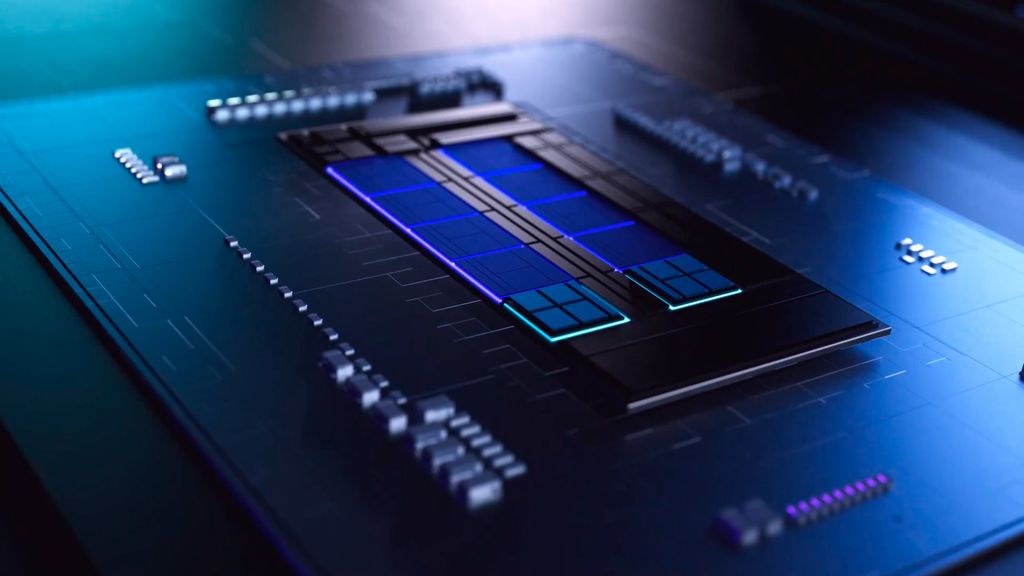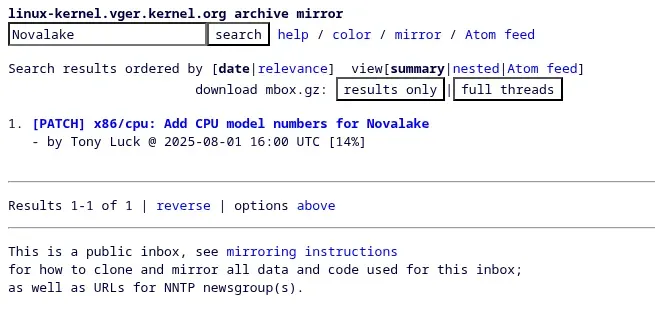
(Image credit: Intel)
For the first time in more than two decades, Intel is moving past its long-standing CPU classification system in favor of a new one. With Nova Lake, the company’s next generation of processors, Intel is signaling the end of the Family 6 era that has defined x86 processors since the late ’90s. This change was unearthed as part of the Linux enablement Intel is doing for Nova Lake as we speak.
The initial patch, spotted in the Linux kernel mailing list by Phoronix, introduces Nova Lake under a brand-new identifier: Family 18. This marks a clean break from the legacy Family 6 framework, which has carried everything from Pentium Pro to Arrow Lake. The move required significant refactoring in previous kernel releases, ensuring Linux code could adapt to architectures beyond Family 6.

(Image credit: Phoronix)
The update also adds definitions for two models: Nova Lake (Family 18, Model 1) and Nova Lake L (Family 18, Model 3), the latter likely denoting low-power mobile variants. These early hooks allow future driver-level patches—covering graphics, power management, and scheduling—to integrate seamlessly once Nova Lake hardware lands in late 2026.
This isn’t just a naming exercise like the company dropping the "i" branding for its CPUs two years ago, rather Intel’s segmentation strategy is becoming clearer: Family 18 for client CPUs, while Family 19 will house next-gen Xeon processors like Diamond Rapids. By splitting desktop and server under distinct families, Intel aims to simplify feature tracking and driver enablement across platforms.

(Image credit: Phoronix)
Although these kernel patches don’t reveal any hardware specs—they just add simple identifiers to the Linux kernel—the roadmap hints at aggressive performance targets. Nova Lake is expected to double core counts over Arrow Lake, with rumored configurations scaling up to 16 Performance cores, 32 Efficiency cores, and 4 LPE cores, along with a new iGPU based on the Xe4 “Druid” architecture. There’s also speculation that Nova Lake will span everything from desktops and laptops to emerging categories like gaming handhelds with Nova Lake-AX, suggesting Intel wants its Linux groundwork to cover a broad range of use cases.
With Panther Lake expected to launch first and bring Intel 18A to the market, likely under the Core Ultra 300 branding, Nova Lake’s debut is still a year away. But Intel’s early enablement ensures that by the time Ubuntu 26.04 LTS arrives, Linux users will have full support baked in—something that’s become an essential part of Intel’s playbook.
Follow Tom's Hardware on Google News to get our up-to-date news, analysis, and reviews in your feeds. Make sure to click the Follow button.

-
 C114 Communication Network
C114 Communication Network -
 Communication Home
Communication Home


